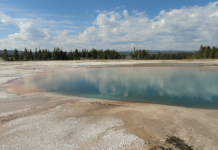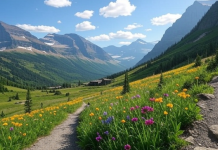Hirta Island is the largest island in the St Kilda archipelago, located in the Outer Hebrides of Scotland, about 40 miles west of the mainland in the North Atlantic. It’s a rugged, remote place, known for its dramatic cliffs, seabird colonies, and unique history.
Hirta spans about 1,575 acres, with steep cliffs rising to 1,400 feet at places like Conachair, the highest sea cliffs in the UK. Its landscape is shaped by harsh winds and waves, creating a stark, treeless terrain with grassy slopes and rocky outcrops.
Hirta was inhabited for possibly 2,000 years, with a small population (never more than 180) living off fishing, seabirds, and sheep. The islanders developed a unique, communal lifestyle, relying heavily on the millions of gannets, fulmars, and puffins for food and oil. By 1930, the remaining 36 residents were evacuated at their own request due to disease, isolation, and unsustainable living conditions. The last native, Rachel Johnson, died in 2016 at 93.
Now uninhabited except for seasonal visitors, Hirta is managed by the National Trust for Scotland. It’s a UNESCO World Heritage Site (designated 1986) for both its cultural significance and natural environment. The island hosts a small military radar station, and conservation workers and researchers visit regularly. Ruins of stone houses, cleits (unique drystone storage huts), and the old village at Village Bay remain.
Hirta is a haven for seabirds, with the world’s largest colony of northern gannets and significant populations of puffins and fulmars. It’s also home to the endemic St Kilda wren and a primitive breed of Soay sheep, which roam wild.
Getting to Hirta is tough — boat trips from the Outer Hebrides take several hours and depend on weather. No public airstrip exists, though a helicopter pad serves the military base. Visitors need permission from the National Trust, and tourism is tightly controlled to protect the ecosystem.
The island’s isolation shaped a distinct Gaelic culture, with traditions like the “Parliament” (a daily meeting of men to organize tasks). St Kilda’s story has inspired novels, films, and music, romanticizing its solitude and resilience.
sources–
https://www.goingthewholehogg.com/visit-st-kilda-scotland/
https://www.travelawaits.com/2479225/visit-hirta-the-remote-scottish-ghost-island/







